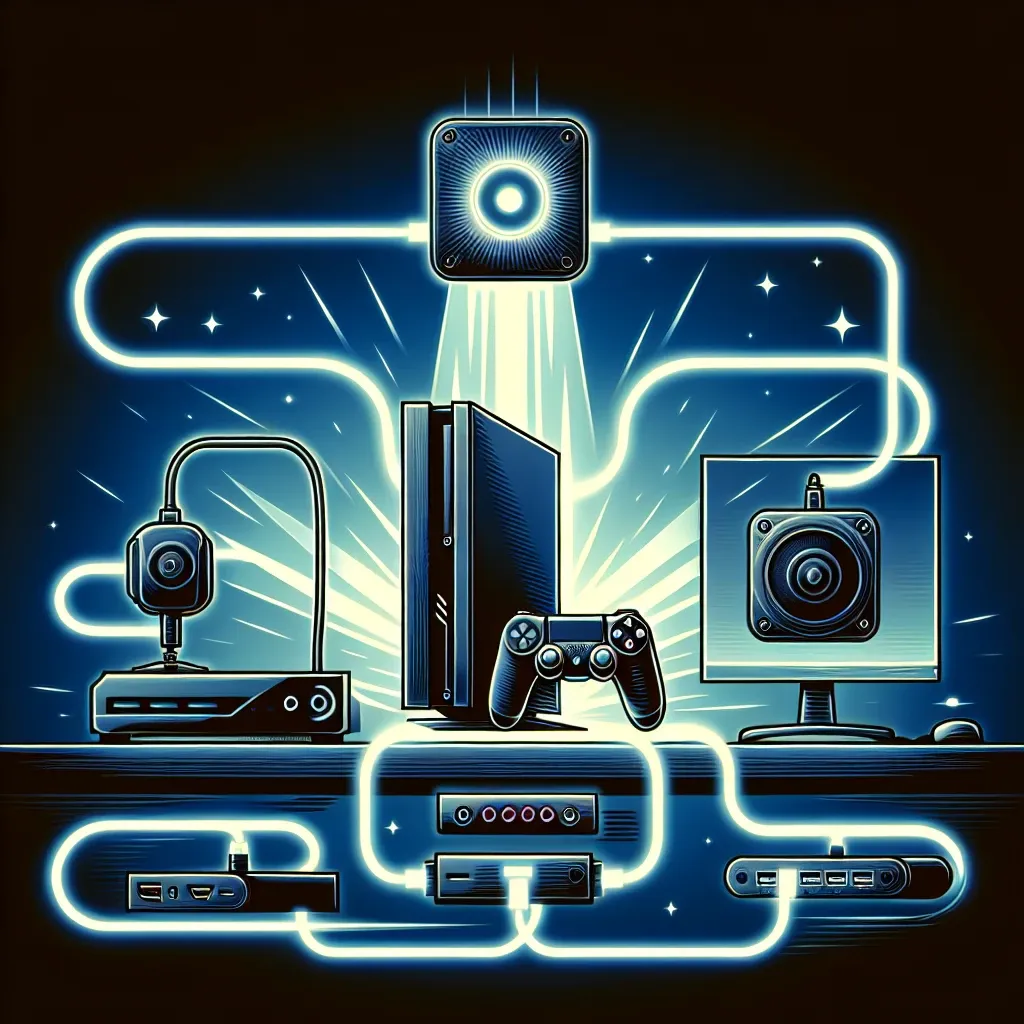Introduction
As the world of gaming continues to evolve, streaming gameplay has become an integral part of the gaming experience for many enthusiasts and professional gamers alike. One common question that arises is whether it is possible to connect a USB hub to an external capture card for streaming console gameplay. In this article, we’ll delve deep into the technicalities, advantages, potential issues, and general setup involved in this process. Understanding these factors will help you make informed decisions about your streaming setup.
Understanding the Basics
Before exploring the connection between USB hubs and external capture cards, it’s essential to understand how each component functions in the context of streaming console gameplay.
What is an External Capture Card?
- Function: An external capture card is a device that records or streams video and audio from a gaming console to a computer. It serves as a bridge between the console and the PC.
- Connectivity: Typically, it connects via USB to a computer and via HDMI to the console, allowing gamers to broadcast their gameplay live.
- Usage: Capture cards are widely used for streaming on platforms like Twitch, YouTube, and more.
What is a USB Hub?
- Function: A USB hub expands the number of available USB ports on a computer or device. This is particularly useful for connecting multiple peripherals such as keyboards, mice, and capture cards.
- Types: USB hubs can be powered or unpowered. Powered USB hubs come with an external power source, enabling them to support more devices simultaneously.
- Connectivity: USB hubs connect to devices through a single USB port and provide additional ports for connecting other devices.
Table of Key Features
| Feature | External Capture Card | USB Hub |
|---|---|---|
| Primary Purpose | Streaming/recording gameplay | Expand USB connections |
| Type of Connection | HDMI & USB | USB |
| Power Source | Powered externally | May require external power |
| Typical Usage | Twitch, YouTube streaming | Connecting multiple peripherals |
Can You Connect a USB Hub to an External Capture Card?
Yes, you can connect a USB hub to an external capture card; however, there are several factors to consider, including power requirements and performance implications.
How it Works
When you connect a USB hub to your external capture card, you are essentially expanding the number of USB ports available for other devices. This allows you to connect items like microphones, cameras, and additional storage without directly using the ports on your computer.
Benefits of Using a USB Hub with a Capture Card
- Increased Connectivity: A USB hub provides more ports, allowing you to connect multiple devices required for streaming.
- Organization: It helps in keeping your setup clean and organized by reducing clutter of cables extending from the console and capture card.
- Flexibility: You can easily swap devices without plugging and unplugging them from the computer itself.
Potential Issues to Consider
- Power Limitations: If you are using an unpowered USB hub, the power supply may not be sufficient to operate the capture card and all connected devices optimally, potentially leading to performance issues.
- Bandwidth Contention: Connecting many devices through a single USB hub may lead to bandwidth contention, leading to dropped frames or lag in your stream.
- Device Compatibility: Not all USB hubs are designed for high-speed data transfer required for streaming. It’s important to select a hub that supports USB 3.0 or higher for best results.
Setting Up the Connection
Follow these steps to set up a connection between your USB hub, capture card, and console:
Step 1: Gather Your Equipment
- Ensure you have an external capture card that supports HDMI input.
- Acquire a quality USB hub that meets your connectivity needs.
- Gather necessary cables: HDMI cable (for the console to capture card) and USB cables (from capture card to hub and from hub to PC).
Step 2: Connect the Console to the Capture Card
Use an HDMI cable to connect your console’s HDMI output to the HDMI input on the capture card.
Step 3: Connect the USB Hub to the Capture Card
Utilize a USB cable to link the capture card to one of the ports on the USB hub.
Step 4: Connect Additional Devices
Now, connect your additional peripherals, such as a webcam or microphone, to the other available USB ports on the hub.
Step 5: Connect the Hub to the Computer
Finally, use another USB cable to connect the USB hub to your computer. Ensure that everything is correctly powered on.
Tips for Optimizing Your Streaming Setup
- Consider using a powered USB hub to ensure that all your devices receive adequate power.
- Opt for USB 3.0 hubs to maximize data transfer speeds and minimize lag.
- Regularly check your connection and cable integrity to prevent unexpected disruptions during streaming.
- Keep your software drivers updated for both the capture card and USB hub.
Conclusion
Connecting a USB hub to an external capture card for streaming console gameplay is not only possible but also highly beneficial for streamers looking to optimize their setup. By understanding the technical aspects, benefits, and limitations of such a connection, you can enhance your streaming experience. With the right equipment and setup, you can create a seamless streaming environment that caters to all your gaming and broadcasting needs. Whether you are a casual gamer or a professional streamer, leveraging technology like USB hubs in conjunction with external capture cards can elevate your gameplay to the next level.

